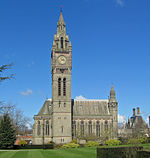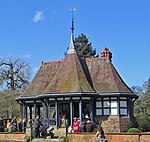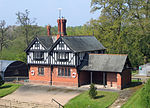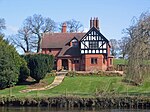Eaton Boat
Grade II listed buildings in CheshireHouses completed in 1880Houses in CheshireJohn Douglas buildings

Eaton Boat is the name of a house within the grounds of Eaton Hall, Cheshire, England. It was originally called Gas Works Cottages. The house is recorded in the National Heritage List for England as a designated Grade II listed building.
Excerpt from the Wikipedia article Eaton Boat (License: CC BY-SA 3.0, Authors, Images).Eaton Boat
Belgrave Avenue, Chester Eaton and Eccleston
Geographical coordinates (GPS) Address Nearby Places Show on map
Geographical coordinates (GPS)
| Latitude | Longitude |
|---|---|
| N 53.144 ° | E -2.8706 ° |
Address
Belgrave Avenue
CH4 9JD Chester, Eaton and Eccleston
England, United Kingdom
Open on Google Maps










